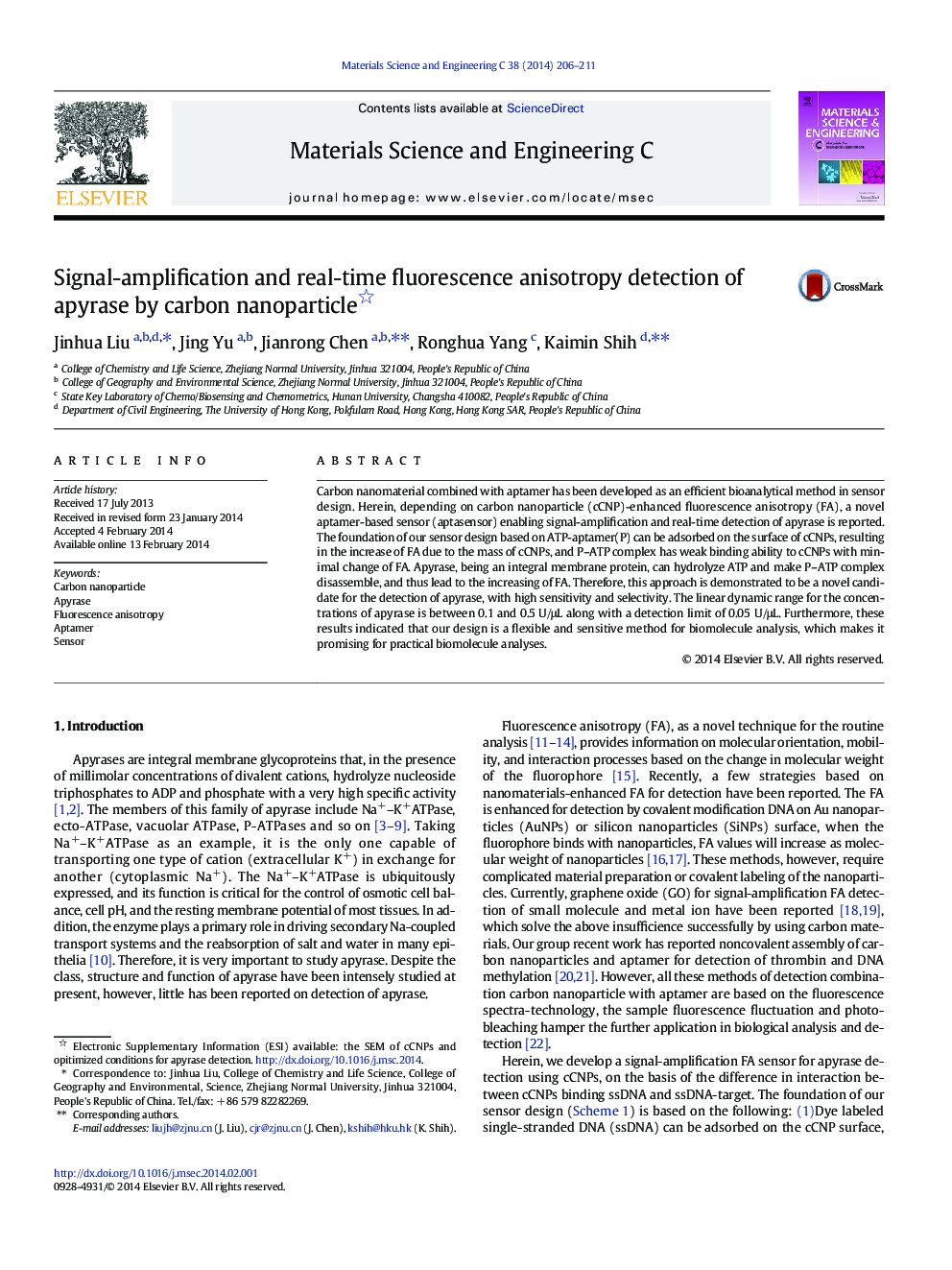| Article ID | Journal | Published Year | Pages | File Type |
|---|---|---|---|---|
| 1428833 | Materials Science and Engineering: C | 2014 | 6 Pages |
•A novel aptamer-based sensor using carbon nanoparticle combined with aptamer is constructed.•Carbon nanoparticles expand the range of variation in fluorescence anisotropy.•We explain the foundation of our sensor design for apyrase detection.•Signal-amplification and real-time detection of apyrase are realized.
Carbon nanomaterial combined with aptamer has been developed as an efficient bioanalytical method in sensor design. Herein, depending on carbon nanoparticle (cCNP)-enhanced fluorescence anisotropy (FA), a novel aptamer-based sensor (aptasensor) enabling signal-amplification and real-time detection of apyrase is reported. The foundation of our sensor design based on ATP-aptamer(P) can be adsorbed on the surface of cCNPs, resulting in the increase of FA due to the mass of cCNPs, and P–ATP complex has weak binding ability to cCNPs with minimal change of FA. Apyrase, being an integral membrane protein, can hydrolyze ATP and make P–ATP complex disassemble, and thus lead to the increasing of FA. Therefore, this approach is demonstrated to be a novel candidate for the detection of apyrase, with high sensitivity and selectivity. The linear dynamic range for the concentrations of apyrase is between 0.1 and 0.5 U/μL along with a detection limit of 0.05 U/μL. Furthermore, these results indicated that our design is a flexible and sensitive method for biomolecule analysis, which makes it promising for practical biomolecule analyses.
Graphical abstractA novel aptamer-based sensor (aptasensor) enabling signal-amplification and real-time detection of apyrase is reported, based on the binding ability between ssDNA and ssDNA-target complex on the cCNP surface. The sensor has a liner response to apyrase in the range of 0.1 to 0.5 U/μL with a detection limit of 0.05 U/μL.Figure optionsDownload full-size imageDownload as PowerPoint slide
